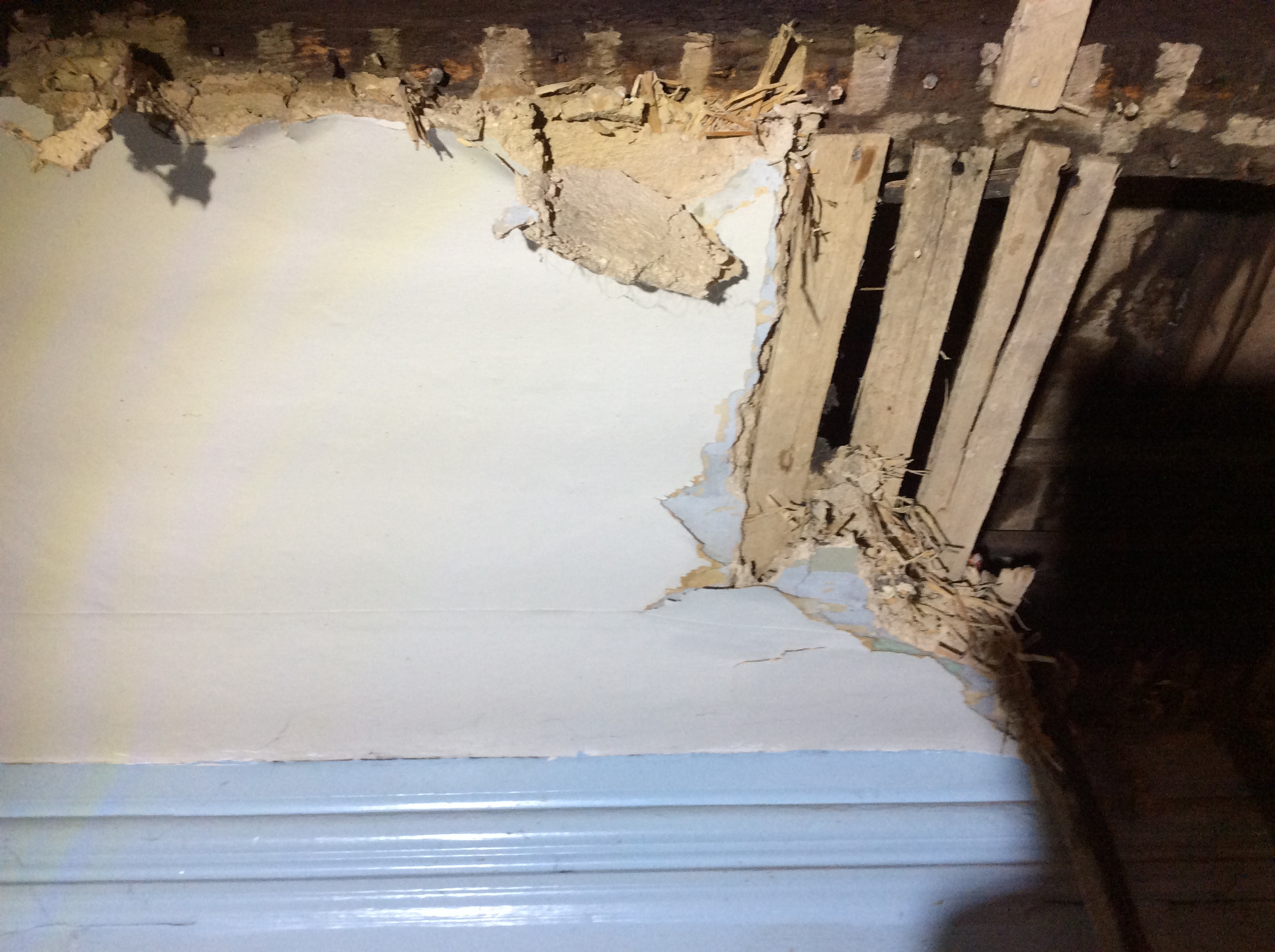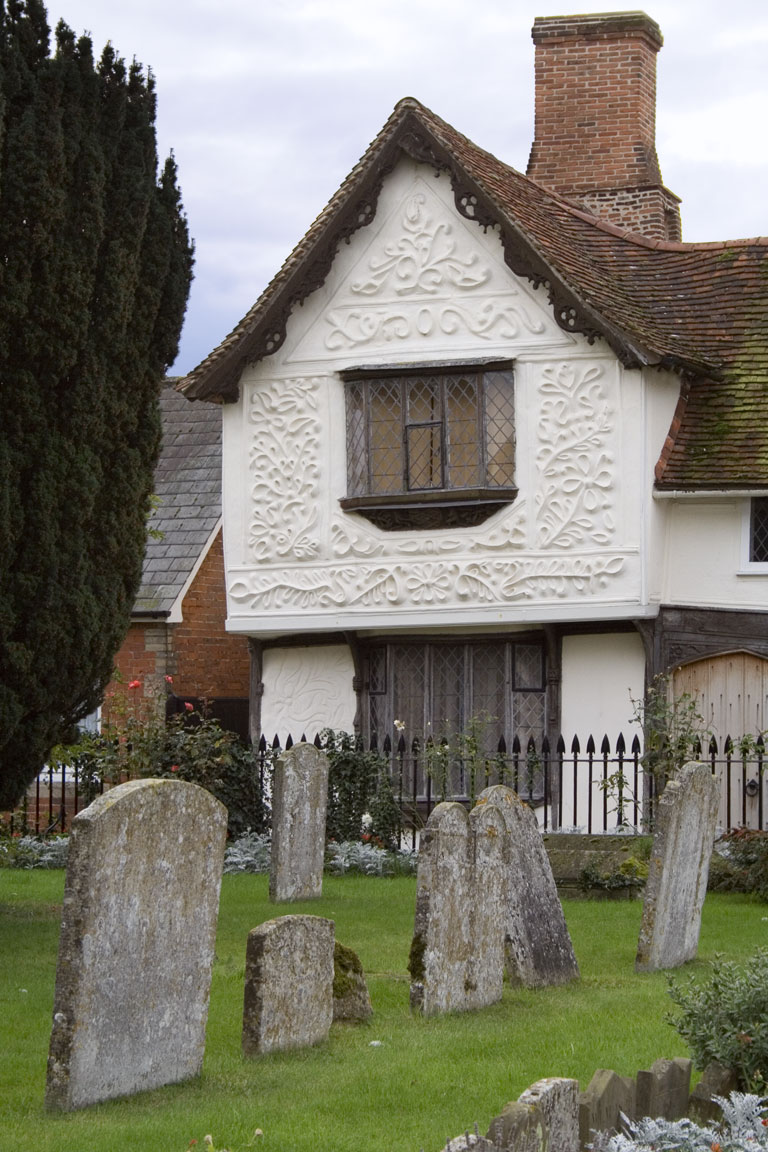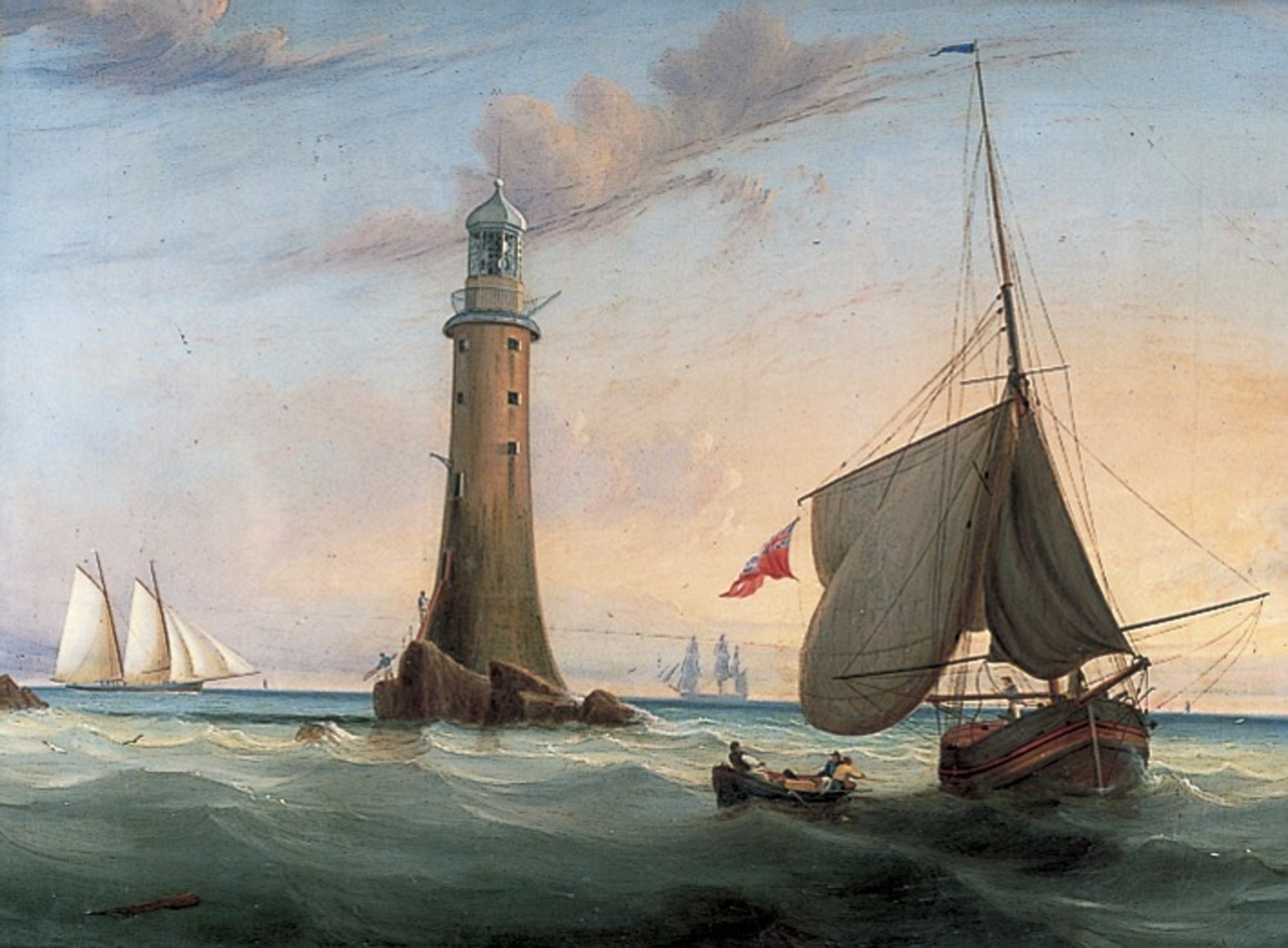|
Plasterwork
Plasterwork is construction or ornamentation done with plaster, such as a layer of plaster on an interior or exterior wall structure, or plaster Molding (decorative), decorative moldings on ceilings or walls. This is also sometimes called pargeting. The process of creating plasterwork, called plastering or rendering, has been used in building construction for centuries. For the art history of three-dimensional plaster, see stucco. History The earliest plasters known to us were lime-based. Around 7500 BC, the people of 'Ain Ghazal in Jordan used lime mixed with unheated crushed limestone to make plaster which was used on a large scale for covering walls, floors, and hearths in their houses. Often, walls and floors were decorated with red, finger-painted patterns and designs. In ancient India and China, renders in clay and gypsum plasters were used to produce a smooth surface over rough stone or mud brick walls, while in early Egyptian tombs, walls were coated with lime and gyps ... [...More Info...] [...Related Items...] OR: [Wikipedia] [Google] [Baidu] |
Gypsum Plaster
Plaster is a building material used for the protective or decorative coating of walls and ceilings and for moulding and casting decorative elements. In English, "plaster" usually means a material used for the interiors of buildings, while "render" commonly refers to external applications. Another imprecise term used for the material is stucco, which is also often used for plasterwork that is worked in some way to produce relief decoration, rather than flat surfaces. The most common types of plaster mainly contain either gypsum, lime, or cement,Franz Wirsching "Calcium Sulfate" in Ullmann's Encyclopedia of Industrial Chemistry, 2012 Wiley-VCH, Weinheim. but all work in a similar way. The plaster is manufactured as a dry powder and is mixed with water to form a stiff but workable paste immediately before it is applied to the surface. The reaction with water liberates heat through crystallization and the hydrated plaster then hardens. Plaster can be relatively easily worked wit ... [...More Info...] [...Related Items...] OR: [Wikipedia] [Google] [Baidu] |
Plaster
Plaster is a building material used for the protective or decorative coating of walls and ceilings and for Molding (decorative), moulding and casting decorative elements. In English, "plaster" usually means a material used for the interiors of buildings, while "render" commonly refers to external applications. Another imprecise term used for the material is stucco, which is also often used for plasterwork that is worked in some way to produce relief decoration, rather than flat surfaces. The most common types of plaster mainly contain either gypsum, lime plaster, lime, or cement plaster, cement,Franz Wirsching "Calcium Sulfate" in Ullmann's Encyclopedia of Industrial Chemistry, 2012 Wiley-VCH, Weinheim. but all work in a similar way. The plaster is manufactured as a dry powder and is mixed with water to form a stiff but workable paste immediately before it is applied to the surface. The reaction with water liberates heat through crystallization and the hydrated plaster then ha ... [...More Info...] [...Related Items...] OR: [Wikipedia] [Google] [Baidu] |
Stucco Plaster Tools
Stucco or render is a construction material made of aggregates, a binder, and water. Stucco is applied wet and hardens to a very dense solid. It is used as a decorative coating for walls and ceilings, exterior walls, and as a sculptural and artistic material in architecture. Stucco can be applied on construction materials such as metal, expanded metal lath, concrete, cinder block, or clay brick and adobe for decorative and structural purposes. In English, "stucco" sometimes refers to a coating for the outside of a building and "plaster" to a coating for interiors; as described below, however, the materials themselves often have little to no differences. Other European languages, notably Italian, do not have the same distinction; ''stucco'' means ''plaster'' in Italian and serves for both. Composition The basic composition of stucco is cement, water, and sand. The difference in nomenclature between stucco, plaster, and mortar is based more on use than composition. Until t ... [...More Info...] [...Related Items...] OR: [Wikipedia] [Google] [Baidu] |
Stucco
Stucco or render is a construction material made of aggregates, a binder, and water. Stucco is applied wet and hardens to a very dense solid. It is used as a decorative coating for walls and ceilings, exterior walls, and as a sculptural and artistic material in architecture. Stucco can be applied on construction materials such as metal, expanded metal lath, concrete, cinder block, or clay brick and adobe for decorative and structural purposes. In English, "stucco" sometimes refers to a coating for the outside of a building and "plaster" to a coating for interiors; as described below, however, the materials themselves often have little to no differences. Other European languages, notably Italian, do not have the same distinction; ''stucco'' means ''plaster'' in Italian and serves for both. Composition The basic composition of stucco is cement, water, and sand. The difference in nomenclature between stucco, plaster, and mortar is based more on use than composition. Until ... [...More Info...] [...Related Items...] OR: [Wikipedia] [Google] [Baidu] |
Pargeting
Pargeting (or sometimes pargetting) is a decorative or waterproofing plastering applied to building walls. The term, if not the practice, is particularly associated with the English counties of Suffolk and Essex. In the neighbouring county of Norfolk the term "pinking" is used. Patrick Leigh Fermor describes similar decorations on pre-World War II buildings in Linz, Austria. "Pargeted façades rose up, painted chocolate, green, purple, cream and blue. They were adorned with medallions in high relief and the stone and plaster scroll-work gave them a feeling of motion and flow." Pargeting derives from the word 'parget', a Middle English term that is probably derived from the Old French ''pargeter'' or ''parjeter'', to throw about, or ''porgeter'', to roughcast a wall.''Webster's Dictionary''. However, the term is more usually applied only to the decoration in relief of the plastering between the studwork on the outside of half-timber houses, or sometimes covering the whole wall. ... [...More Info...] [...Related Items...] OR: [Wikipedia] [Google] [Baidu] |
Lime (material)
Lime is a calcium-containing inorganic material composed primarily of oxides and hydroxide, usually calcium oxide and/or calcium hydroxide. It is also the name for calcium oxide which occurs as a product of coal-seam fires and in altered limestone xenoliths in volcanic ejecta. The International Mineralogical Association recognizes lime as a mineral with the chemical formula of CaO. The word ''lime'' originates with its earliest use as building mortar and has the sense of ''sticking or adhering''. These materials are still used in large quantities as building and engineering materials (including limestone products, cement, concrete, and mortar), as chemical feedstocks, and for sugar refining, among other uses. Lime industries and the use of many of the resulting products date from prehistoric times in both the Old World and the New World. Lime is used extensively for wastewater treatment with ferrous sulfate. The rocks and minerals from which these materials are derived, typ ... [...More Info...] [...Related Items...] OR: [Wikipedia] [Google] [Baidu] |
George Jackson (plasterwork)
George Jackson (1766–1840) was a British plasterwork innovator, active from 1780 onwards. He was commissioned by architect Robert Adam Robert Adam (3 July 17283 March 1792) was a British neoclassical architect, interior designer and furniture designer. He was the son of William Adam (1689–1748), Scotland's foremost architect of the time, and trained under him. With his o ... to produce reverse-cut boxwood moulds (many to Adam designs). Jackson formed a company which still produces composition pressings and retains a boxwood mould collection. In 1780 Jackson founded George Jackson & Sons Ltd. in London which was active in decorative plaster ornaments and introduced the use of composition plaster into England. References External links * * 1766 births 1840 deaths Plasterers {{GB-bio-stub ... [...More Info...] [...Related Items...] OR: [Wikipedia] [Google] [Baidu] |
Bone Ash
Bone ash is a white material produced by the calcination of bones. Typical bone ash consists of about 55.82% calcium oxide, 42.39% phosphorus pentoxide, and 1.79% water. The exact composition of these compounds varies depending upon the type of bones being used, but generally the formula for bone ash is: Ca5(OH)(PO4)3. Bone ash usually has a density around 3.10 g/mL and a melting point of 1670 °C (3038 °F). Most bones retain their cellular structure through calcination. History Bible From Isaiah: "And the people shall be as the burnings of lime: as thorns cut up shall they be burned in the fire" Its use is mentioned in the Book of Amos (2:1): "I will not turn away the punishment thereof, because he burned the bones of the King of Edom into lime." It was used in ancient formulas for white paint and cosmetic pigments, and in the cupellation process to separate silver from lead. Antiquity Burnt bones have been recovered from numerous Ancient Greek sanctuaries dating fr ... [...More Info...] [...Related Items...] OR: [Wikipedia] [Google] [Baidu] |
Hydraulic Lime
Hydraulic lime (HL) is a general term for calcium oxide, a variety of lime also called quicklime, that sets by hydration. This contrasts with calcium hydroxide, also called slaked lime or air lime that is used to make lime mortar, the other common type of lime mortar, which sets by carbonation (re-absorbing carbon dioxide (CO2) from the air). Hydraulic lime provides a faster initial set and higher compressive strength than air lime, and hydraulic lime will set in more extreme conditions, including under water. The terms 'hydraulic lime' and 'hydrated lime' are quite similar and may be confused but are not necessarily the same material. Hydrated lime is any lime which has been slaked whether it sets through hydration, carbonation, or both. Calcium reacts in the lime kiln with the clay minerals to produce silicates that enable some of the lime to set through hydration. Any unreacted calcium is slaked to calcium hydroxide which sets through carbonation. These are sometimes called 's ... [...More Info...] [...Related Items...] OR: [Wikipedia] [Google] [Baidu] |
Roman Cement
Roman cement is a substance developed by James Parker in the 1780s, being patented in 1796. The name is misleading, as it is nothing like any material used by the Romans, but was a "natural cement" made by burning septaria – nodules that are found in certain clay deposits, and that contain both clay minerals and calcium carbonate. The burnt nodules were ground to a fine powder. This product, made into a mortar with sand, set in 5–15 minutes. The success of Roman cement led other manufacturers to develop rival products by burning artificial mixtures of clay and chalk. History There has been recent resurgence of interest in natural cements and Roman cements due mainly to the need for repair of façades done in this material in the 19th century. The major confusion involved for many people in this subject is the terminology used. Roman cement was originally the name given, by Parker, to the cement he patented which is a natural cement (i.e. it is a marl, or limestone contain ... [...More Info...] [...Related Items...] OR: [Wikipedia] [Google] [Baidu] |
James Frost (cement Maker)
James Frost (1780?-1840?) was a British cement manufacturer who invented processes that led to the eventual development of Portland cement. Biography Frost was born in Finchley, Middlesex, England. He set up a plant making Roman cement at Harwich in 1807, supplying it for government work. He began experimenting with formulations for "artificial" cements that would provide a cheaper alternative to Roman cement. He appears to have produced a prototype cement at Harwich in 1810. However, it was not until 1822 that he was granted a patent for what he called "British Cement". In October 1825, he leased land at Swanscombe, Kent, and set up a plant to manufacture both Roman cement and the new product. The key innovation in his work was the "wet" grinding of raw materials, which became fundamental to the early development of Portland cement. He ground the soft local chalk together with alluvial clay from the Medway estuary and added water in a washmill to produce a thin slurry fro ... [...More Info...] [...Related Items...] OR: [Wikipedia] [Google] [Baidu] |
Portland Cement
Portland cement is the most common type of cement in general use around the world as a basic ingredient of concrete, mortar, stucco, and non-specialty grout. It was developed from other types of hydraulic lime in England in the early 19th century by Joseph Aspdin, and is usually made from limestone. It is a fine powder, produced by heating limestone and clay minerals in a kiln to form clinker, grinding the clinker, and adding 2 to 3 percent of gypsum. Several types of portland cement are available. The most common, called ordinary portland cement (OPC), is grey, but white Portland cement is also available. Its name is derived from its resemblance to Portland stone which was quarried on the Isle of Portland in Dorset, England. It was named by Joseph Aspdin who obtained a patent for it in 1824. His son William Aspdin is regarded as the inventor of "modern" portland cement due to his developments in the 1840s. The low cost and widespread availability of the limestone, shales ... [...More Info...] [...Related Items...] OR: [Wikipedia] [Google] [Baidu] |








